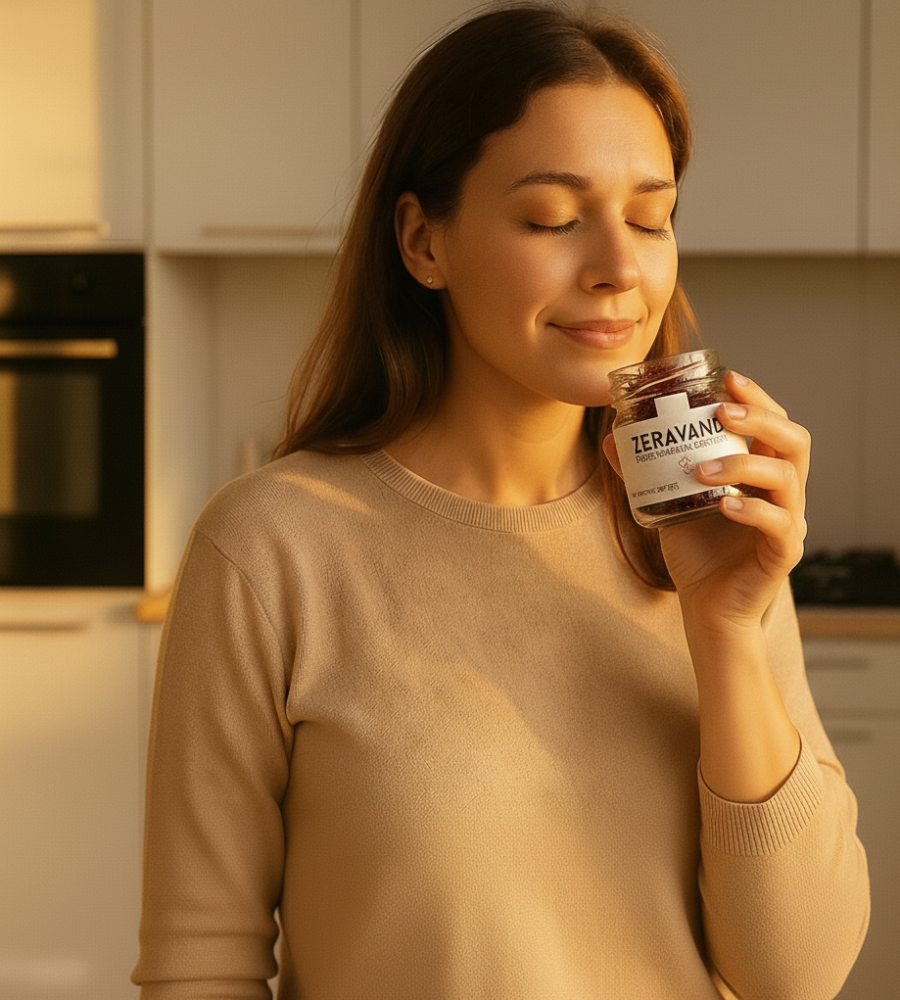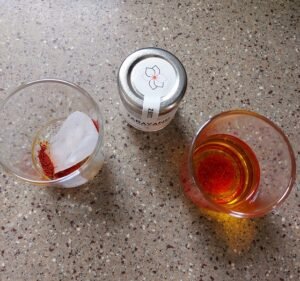“An ounce of saffron costs more than an ounce of gold.” Despite the fact saffron is the most expensive spice in the world, it does not cost more than gold. 1 gram of good saffron should be around £7 and a gram of gold today is over 10 times that price. But price is part of the story, the real question people want answered is much more sensory, what does saffron actually taste like?
The truth is saffron doesn’t behave like most spices. It doesn’t overwhelm you the way chili does, nor does it hit you with sharp notes like black pepper. Instead, saffron whispers. Its flavour is subtle, layered, and surprisingly complex, some describe it as earthy and honey like, others as floral with hints of hay and metallic sharpness. That’s exactly what makes it so fascinating. The taste isn’t one dimensional and it behaves differently with different food types, for example, it acts differently with seafood compared with red meat.
In this article we’ll break down saffron’s flavour profile in a way that goes beyond vague descriptions. We’ll explore how its taste shifts depending on preparation, what foods it pairs best with, and even how to identify authentic saffron so you’re not wasting your money on imposters. By the end, you’ll not only be able to describe saffron’s flavour with confidence, you’ll know how to use it to elevate your cooking without wasting a single strand.

Describing saffron’s taste isn’t simple. It doesn’t shout one note. Instead, it layers multiple sensations on the palate. The first impression is usually earthy, think of freshly tilled soil or dry hay, but refined and delicate rather than heavy. Then comes the sweetness, a honey like warmth that lingers rather than overwhelms. Finally some can detect an almost mineral like tastes that balances the softness with an edge.
Texture plays a role too. Saffron threads themselves are dry and brittle, but when steeped in lukewarm water or milk, they release a golden pigment along with those signature flavours. This infusion is the secret, saffron doesn’t just add taste, it transforms the entire dish by carrying both colour and aroma into every bite.
Another way to think of saffron’s flavour is through contrast. Compared to turmeric, which gives a similarly golden hue, saffron is lighter, brighter and more floral. against cinnamon or clove, it feels understated and elegant rather than bold. and unlike chili or cumin, it won’t dominate. Instead, saffron creates a backdrop, a luxurious stage for other ingredients to perform on.
The way you handle saffron can completely change the way it tastes. If you grind the threads into a powder and stir them directly into a dish, you’ll get an uneven distribution burst of flavour in some bites, and almost none in others. The proper method is to bloom it first. Place the threads in a small bowl with lukewarm water and let it steep for 10-15 minutes. This step unlocks the flavour and the colour.
Heat also matters. Exposing saffron to very high direct heat will turn saffron bitter and can make it loose its delicate aroma, so never toss it straight into a hot pan. Always add saffron towards the middle or end of cooking.
Saffron shines brightest in foods that allow its subtle flavour to come through rather than compete with stronger spices.
Rice dishes:- To name a few famous examples, Italian risotto Milanese, Persian tahchin and Spanish paella. All rely on saffron for colour and taste. In rice and pasta saffron doesn’t get lost, it infuses perfectly, creating a golden aromatic foundation.
Desserts:- Custards, ice cream, panna cottas and pastries all become richer with saffron. The honeyed notes pair perfectly with dairy and sugar. So next time try rice pudding with saffron.
Seafood:- In my opinion this is where saffron shines. It pairs beautifully with seafood. The subtle complex flavours of saffron will lift any seafood dish to the next level. So next time if you are making seafood risotto or linguini add a bit of saffron, the colour and flavour will transform the dish. The delicate sweetness of lobster, scallops or white fish harmonises beautifully with saffron’s floral warmth. A saffron broth of sauce elevates the dish without masking the natural taste of the protein.
Poultry and lamb:- Saffron complements meats that can handle richness but benefit from elegance. Persian saffron chicken or Moroccan lamb stews are great examples.
Practical tip:- Saffron pairs best with ingredients that won’t overshadow it. So if you are making a dish with an array of strong spices, or heavy on garlic, then saffron’s flavour will not perform well.
Always buy threads, not powder. Powder saffron is more prone to be adulterated. If you are lucky it will be cut with turmeric or paprika, but in most cases it will be corn starch and food colouring. Threads are harder to fake. and will last much longer in your spice cupboard.
The first and quickest method is the visual test, look for red threads with trumpet shaped ends. Genuine saffron threads are fine, slightly curled and deep crimson with orange tip. You can also do the water test, drop a few threads in room temperature water, if it starts to release colour quickly then there is a good chance it has been laced with colouring. Real saffron threads (must be full not crushed) release a golden yellow colour slowly.
Look for saffron in glass jars. Glass is a nonreactive material and will not effect the scent and flavour of your spice, specially if you are not a regular user and want your saffron to last longer. Plastic containers are not great, the porous material will absorb odors and leach chemicals.
Use blooming method to prepare your saffron. before adding to your dish. Steep your saffron in lukewarm water, 2 to 3 tablespoons of water should be enough for 2-3 pinches of saffron.
Pair it thoughtfully, avoid crowding it with too many bold spices.
Store it correctly. Keep it in an airtight container away from light and moisture. And always take note of the price. Quality saffron costs money, there is no shortcut around it.
So, what does saffron taste like? It’s floral, earthy, honeyed and a slightly minerally, with a complexity that unfolds slowly rather than hitting all at once. But more importantly saffron taste like refinement, the subtle difference between a good dish and an unforgettable one.
If you buy authentic threads, bloom it properly and pair it with the right food, you’ll discover why it has been treasured for centuries across so many cuisines. and you don’t need much, just a pinch or two can transform an entire dish.
